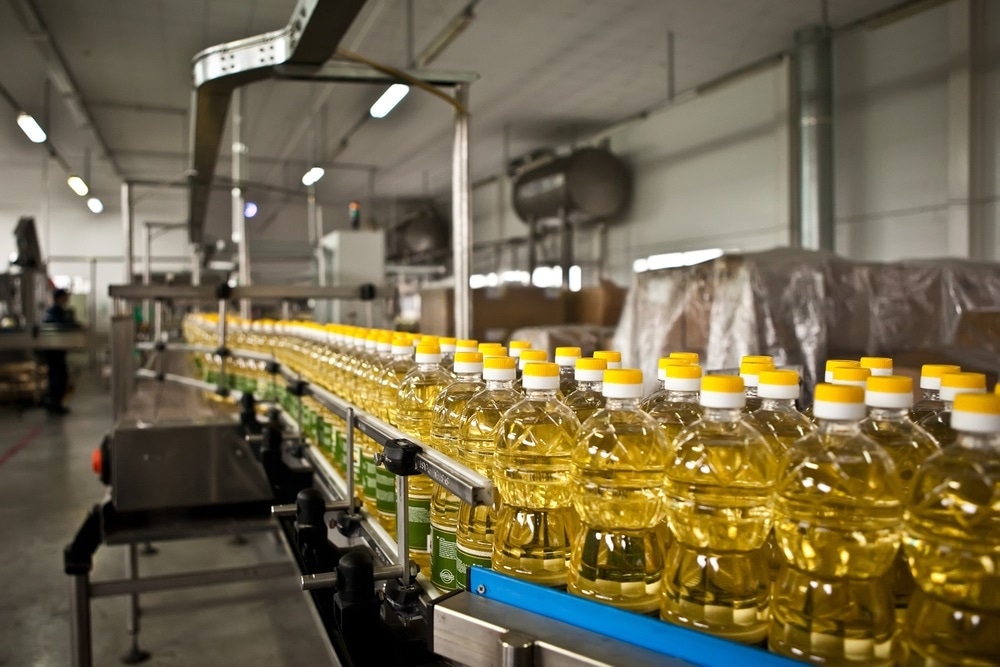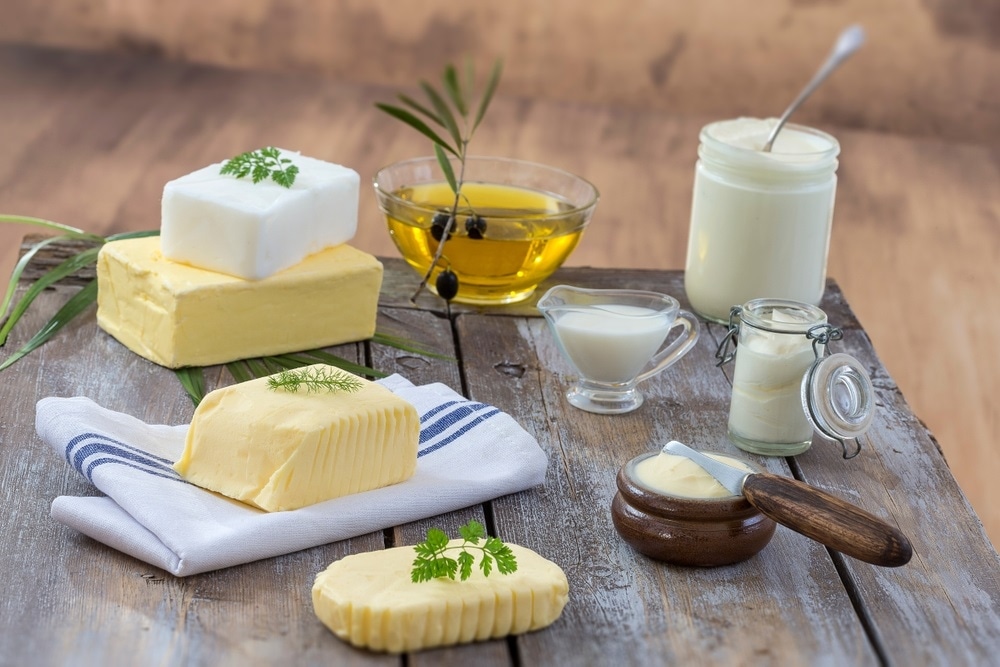A nutritional diet is essential for everyday life. Oils and fats contribute significantly to various body functions. It is important that we can test and evaluate the quality of edible fats and oil such as the fatty acid composition, iodine value, free fatty acids (FFA), trans fatty acids (TFA), anisidine value (AnV), and many other parameters. FT-NIR Spectroscopy can allow the food industry to test oils and fats in their production process without compromising the quality of the product.
In this interview, Mickaël Watiez, Head of Research & Development at Lesieur, and Dagmar Behmer, Marketing Manager Applied Spectroscopy at Bruker Optics talk to News-Medical Life Sciences about the role FT-NIR Spectroscopy can play in testing edible oils and fats.
How many calibration samples are generally required when working with FT‑NIR Spectroscopy in the testing of oils and fats?
This really depends on the specifics of the application in question. For example, a feasibility study would likely start with around 30 to 50 samples. It is also dependent on the types and number of different oils being analyzed and whether or not these are to be combined. The quality of the reference analysis will also have an impact.
If you want to develop a method and then validate this later on, more samples will be required.

Image Credit:Shutterstock/SebastianDuda
Is it possible to measure fortificants in edible oils, for example, the amount of Vitamin A present?
It is certainly possible to measure fortificants, and these are usually measured in terms of concentration. We have already worked on examples where we measured the concentrations of certain vitamins within crude oil, such as sunflower and corn oil, and refined oil such as olive oil.
How much detail can be measured in terms of fatty acid profiles in edible oils, for example, total, mono or polyunsaturated fatty acids?
We can measure polyunsaturated, monounsaturated, or saturated fatty acids as a combined value of the total amount, but we can also look at the individual fatty acid, like oleic acids, ferulic acid, etc. The level of detail depends on the oil being analyzed, but we can generally analyze all fatty acid compositions from C4 to C26. We have also developed calibration methods for fish oils, which generally have higher fatty acid concentrations.
There are many possibilities with NIR. How many calibrations are included with an instrument purchase, and would you expect to have to revise calibrations based on each oil type?
Bruker offers a dedicated set of calibrations that can be purchased together with the instruments. They are more or less ready to go out of the box, but it is often advisable to adjust these to the local situation and application in order to closely match the results with existing analytical results, perhaps by applying a small bias.
Users may also have to adjust these depending on the type of oil being analyzed and ensure these are validated against any in-house standards, but the pre-packaged calibrations provide an excellent starting point.

Image Credit:Shutterstock/SARYMSAKOV ANDREY
NIR can be used to assess the adulteration of oils. How would a calibration to assess adulteration be set up?
Adulteration can be assessed by analyzing fatty acid composition, analyzing the oil before and after suspected changes and calculating a simple percentage of fatty acid composition difference. As well as analyzing the fatty acid profile, the triacylglyceride profile can also provide valuable insight into potential adulteration.
How accurate is FT-NIR when analyzing raw materials such as seeds or copra that have a large variation in size?
Generally, the sample would need to be ground to make it more homogenous. Then the accuracy can be close to the accuracy of the reference method in use. This is why checking the accuracy of the reference method is especially important. Of course this also depends on the parameter and type of oil.
How long does it take to set up the calibration curves for a specific oil?
Setting up effective calibration curves requires the use of different samples from different locations, so this will depend on the production methods and availability of samples etc. This may typically take between three and six months requiring around 250 samples.
It is advisable to start with retained samples and to collect these as early as possible, but if there is no option but to wait for new samples, then this can take longer.
How will the results be displayed on the instrument itself?
Results are displayed in a table on screen. For example, the TANGO system will provide the results alongside an indication of whether these are within predefined limits and a flag if the spectrum does not match the data set.
Analysis files can be printed out, or CSV files can be generated to import into other applications. Overall, there are many ways to generate the results.
Are FT-NIR instruments generally ready to use, or do these require a lot of setup?
Instruments are more or less ready to use instruments if the calibrations are purchased as well. Otherwise, users will obviously have to invest some time to add appropriate reference values to the system.
Users will still need to collect their own samples, and these need to be measured with the pre-calibrated system to see if the results are as expected. If not, it may be necessary to apply some minor corrections, add a bias, or add some of your own samples referenced with in-house reference analysis into the calibration itself.
This sounds like a complicated process, but it is relatively straightforward.
Is there an in-line version of the system suitable for use in frying systems, for example, one that is continuous and suitable for use at higher temperatures?
Absolutely. We can offer high temperature flow cells or high temperature probes, which can be implemented directly into an existing process. Users can connect up to six different probes to one system, so they can sequentially measure six lines.
The instrument does not need to be near the measuring points - we work with optical fibers and they can operate up to 100 meters away from the point of measurement.

Image Credit:Shutterstock/JPC-PROD
Is it possible to use FT-NIR to analyze phosphor in oils?
This is possible, but mainly in crude oils. Because phosphor lipids are generally removed from edible oils, once these are processed, there is normally too little phosphor present to be detected.
What temperature range is typical for one calibration when measuring edible oil?
We tend to stabilize samples at temperatures around 50 degrees, depending on what the oil is. For example, when working with marine oils which easily oxidate, we would usually stabilize these at around 40 degrees, but palm oil fractions would not melt at 50 degrees, so the instrument would be set to 60+ degrees.
The instrument itself can heat up to 120 degrees without a problem. It is important to maintain a stable temperature because even a small change in temperature can impact the spectra, potentially affecting accuracy.
In the olive oil industry intended for export, the reference method is chromatography. Is it possible to integrate or validate an NIR method to replace that, or is this only intended to be used for internal routine analysis?
The legislation does not fully recognize NIR for this type of analysis, but where NIR does help in this scenario is in ascertaining which samples will pass these tests and which need to undergo full GC analysis.
This potentially saves a lot of money, especially if the GC analysis is performed remotely or externally. It is hoped that in the future, this could be a normalized method, however.
About Mickaël Watiez
.jpg)
Mickael Watiez graduated with a master’s degree in analytical chemistry. He has been working for Lesieur, the first edible oil manufacturer in France and part of the Avril group, since 2004. Today, he is Head of the R&D center and in charge of the analytical laboratory.
Recognized for his skills in the development of rapid analytical methods, he knows how to make his expertise available to the factories of the Avril Group in order to improve the productivity of processes and laboratories.
In addition, Mickael is a player in ISO standardization as project manager and head of the French delegation to the ISO committee.
About Dagmar Behmer
.jpg)
Dagmar Behmer holds an MSc degree in Analytical Chemistry and is today Marketing Manager of the Applied Spectroscopy business area of Bruker.
Before joining Bruker in 2000, she began her professional career as a QC manager in the GC lab of a multinational specialty gas company. Today, she is looking back on more than 25 years of experience with FT-NIR spectroscopy, focusing on food and agricultural applications and edible oils & fats in particular.
Dagmar published several papers on olive oil and frying fats as well as book chapters on non-destructive analysis of food with FT-NIR spectroscopy. She is member of AOCS American Oil Chemists' Society), DGF (Deutsche Gesellschaft für Fettwissenschaft) and GOED (Global Organization for EPA & DHA omega-3s).